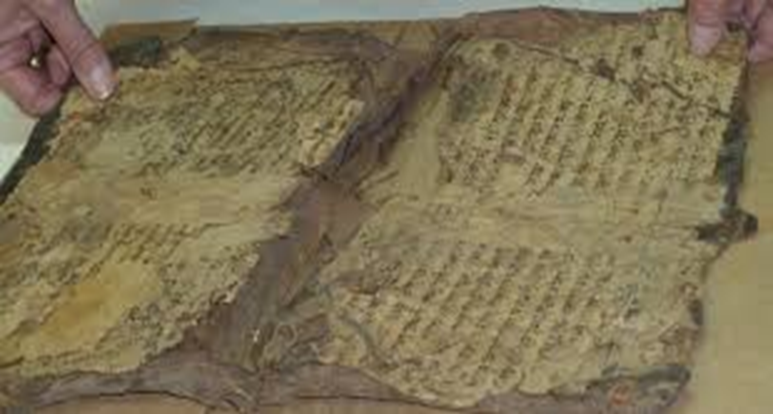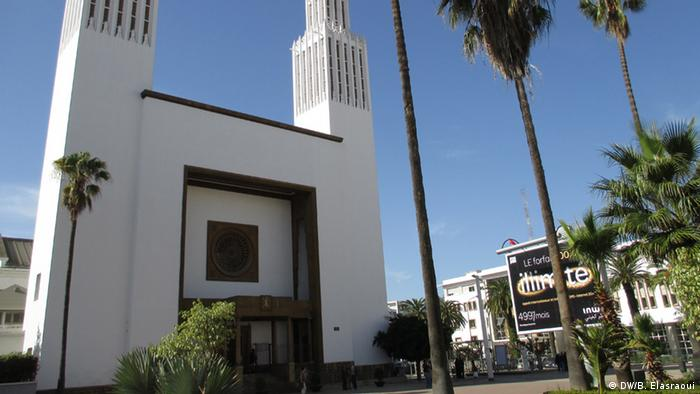Hebrew documents in southern Morocco... an archaeological discovery of the Jewish presence in the kingdom

Moroccan and foreign researchers in antiquities and heritage are accelerating the exploration of Hebrew and Jewish antiquities in the Aqa oasis in southern Morocco, through continuous, unprecedented excavations in the Jewish temple "Takadert", to dust off historical and heritage evidence that reflects the Jewish presence in the Souss region and Morocco in general.
This archaeological mission brought together a Moroccan and Israeli team, and resulted in finding documents written in Hebrew that were described as important. These are the researches that have been undertaken during the last two years, in the context of a project to explore and restore Jewish heritage in the Moroccan oases, which were known to have a large presence of Moroccan Jews, before they left. A large part of them are the country in 1967.
"Moroccan heritage"
These excavations came after a joint research with the Israeli "Ben Gurion" University. The supervisor of the excavations, the archaeologist and professor at the National Institute of Archeology and Heritage in Rabat, Sagheer Mabrouk, says, “The research on the Jewish heritage or the Hebrew component of the history of Morocco is being carried out for the first time at the National Institute of Archeology and Heritage, since since the establishment of the institute there has been no Archaeological excavations on Moroccan Jewish heritage.
This means, according to the same speaker, that "archaeological excavations to discover this heritage that makes up Moroccan culture and identity did not exist before," adding that "of course there were historical and heritage studies on the issue of the Jewish presence in the kingdom."
Excavations and extensive archaeological campaign
The archaeological research team carried out excavations at the "Tkadert" temple in the city of Aqa in the Tata region in southern Morocco, which is a Amazigh region belonging to the Greater Souss region, "between February 27 and approximately March 7," states the supervisor. fossils.
The researchers found Hebrew documents that show the organization of Jewish life in the oases of the Souss region in southern Morocco dating back to the nineteenth and twentieth centuries, and highlight part of the life of Moroccan Jews in the past.

But before that, "we first carried out an archaeological campaign last year in the same area, and we discovered many antiquities and facilities related to the Moroccan Jewish community, including, for example, the "Akrad" temple in the Tamanart oasis in Tata, where we carried out archaeological excavations that resulted in a group of important archaeological discoveries, especially written manuscripts. In Hebrew, which dates from the 19th to the 20th century," the archaeologist continues.
Why is it difficult to accept the other as he is? Share with us your pain (or your experiences) if you have experienced rejection of any kind. Share with us what's going on in your head right now. Change, do not adapt!
This came during the rescue operation of the Jewish synagogue of "Tamannart", which was damaged by floods in the region, which resulted in the discovery of documents written in Hebrew that mainly include purchase contracts and marriage contracts, along with some religious documents and some amulets, reflecting the lifestyle of Moroccan Jews in an area dominated by Amazigh mountain character.
Preserving documents and restoring the synagogue
In this context, the regional governor of the cultural heritage of Souss-Massa, Larbi Birouane, confirmed that thanks to the operation, "the Jewish synagogue in Tamanart, which was in a very poor condition, was saved, and some of the damaged documents were preserved in the place through a laboratory for processing the archives."
In his interview, Berwan continued, "The synagogue was renovated by the architect and anthropological researcher Salima al-Naji, while the documents are preserved as a national heritage at the headquarters of the Directorate of Culture in Agadir."
The archaeological finds discovered in the region will guide us to a set of social data first, and to the economic life second; Especially since it confirms the settlement of Jews in the southern region since the Middle Ages
Preserving documents, while evaluating archaeological sites, for the official "is evidence of the great importance of these discoveries, especially as they benefited us and gave us a good idea about the ancient Hebrew heritage in the southern Moroccan region. It also gave us an idea of the type of archaeological finds, and of a group of ancient manuscripts written in Hebrew." says the superintendent of the excavations and the archaeologist.

He added, "These discoveries, as archaeologists, we consider important material evidence for the rewriting of history in the Aqa region, and the rewriting of the history of Morocco in general, given that it lacks a set of sources, especially archaeological ones."
For his part, Al-Sagheer Mabrouk considers that “the archaeological finds discovered in the region will indicate to us a set of social data first, and economic life second, especially as they confirm the settlement of Jews in the southern region since the Middle Ages, as Aqa was an important commercial area that linked the south of the Sahara to northern Morocco, and played In which Jewish merchants played an important role.
Live in a shopping mall
In the context of this social and economic situation that characterized the oases and mountains of Tata in southern Morocco, as a meeting place for the desert trade, which was active between ancient Morocco and West African countries, "the story of coexistence between Jews and the indigenous Amazigh population emerged, which gave the Jewish community the Moroccan identity culturally and socially." Says the researcher in social history, Hassan Tikbdar.
He continues in his interview that the Jews who settled in the region's oases, especially in the mellah of the town of "Tamanart," and the mellah is the Jewish neighborhood in the cities and villages of Morocco, "enjoyed freedom of residence, ownership, sale and purchase, which made many of them attracted to the commercially active Tamannart Oasis." .
Rather, the Jewish presence in the region was "associated with a set of legal controls and social norms to which entire tribes were subject, while the local leaders in Tamanart provided security for the Jews and guaranteed their economic interests," adds the researcher in social history to Tamanart's painting.
The same spokesman stated, "The Jews of Tamanarat entered into various daily relations with the Amazigh Muslims, which are often characterized by a commercial character; they are mutual relations characterized by a kind of pragmatism, with the inhabitants of both sides submitting to the authority of Amghar, which is the highest authority in the tribe," pointing out that The relationship between Muslims and Jews in the oasis is "often marked by mutual respect".

Therefore, “the local memory of Tamanarat today preserves a group of composite images of the Jewish presence, dominated by spontaneous perceptions imbued with feelings of nostalgia associated with good neighborliness and coexistence,” according to Tikbdar, who concluded that “the settlement of Jewish groups is ancient in the Amazigh region in southern Morocco.”
The door is open to hypotheses
However, at the general level, "there is no agreed consensus among specialists in the history of Moroccan Jews about the date of the first presence of followers of this religion in the Far Maghreb, as there are many narrations on this matter, relying on many different sources on what is common among North African Jews." In general, and the Jews of Morocco, especially the recurring folk tales and beliefs," says the researcher in Jewish history in Morocco, Rachid Dunas.
In his interview Dunas said that what is agreed upon is that the presence of Jews in Morocco dates back, in any case, to pre-Christian times. In this context, the Jewish orientalist historian Nahum Slush talks about a Hebrew inscription that he himself found on a tombstone at the Volubilis archaeological site near the city of Meknes, dating back to the Roman period that dates back to the third century AD.
The Jews of Tamanarat entered into various daily relations with the Amazigh Muslims, often of a commercial nature. They are mutual relations characterized by a kind of pragmatism, with the population on both sides subject to the authority of Amghar
Accordingly, “it can be said that the beginning of the actual presence of the Jews in Morocco began with the beginning of the third century AD, when the newcomers resided among the Amazigh tribes scattered throughout the countries of Morocco, especially in the interior regions, and one of the results of this matter was that the Jews of Morocco were affected by many Amazigh customs and traditions", records the speaker.
However, "there is another hypothesis that needs further research and scrutiny. It goes to the fact that most of the Jews of Morocco, and specifically the Jews who lived in the interior Moroccan regions, are of Amazigh origin after some of the Amazighs of Morocco were converted to Judaism. This hypothesis was supported by the Jewish researcher Haim Zafarani, and it is difficult to deny or This hypothesis has been confirmed so far," the researcher continues in Moroccan Jewish history.
All this situation opens the door to multiple speculations and hypotheses, most of which are not devoid of ideological backgrounds and circumstantial considerations. "Therefore, the results of recent archaeological discoveries may help us answer many questions related to the issue of the Jewish and Jewish presence in Morocco," concludes Dunas.
Source : websites

